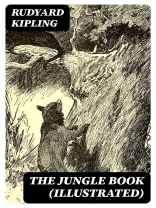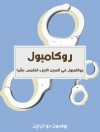Rudyard Kipling’s ‘The Jungle Book (Illustrated)’ masterfully interweaves themes of nature, identity, and colonialism within a narrative that captivates both children and adults. The book is set in the lush landscape of the Indian jungle, bringing a vibrant backdrop to the coming-of-age story of Mowgli, a boy raised by wolves. Kipling’s prose, rich with rhythmic verse and evocative imagery, reflects Late Victorian literary trends while drawing from ancient folklore and fables, which underscores the timeless moral lessons embedded in the stories. The striking illustrations that accompany the text further enhance the reader’s immersion into this wild, enchanting world, revealing the dual struggle between civilization and the primal instincts found in both animals and humans alike. Rudyard Kipling, born in India and raised in England, drew from his own varied experiences while writing ‘The Jungle Book.’ His childhood in India shaped his profound understanding of the cultural complexities and colonial dynamics of the setting. Kipling’s affinity for storytelling, combined with his keen observations of animal behavior and human nature, are evident throughout the tales, emphasizing not only the relationship between man and nature but also the intricate fabric of social hierarchies. This classic work is essential for readers interested in rich narratives that bridge cultural divides, explore ethical dilemmas, and evoke a sense of adventure. Whether experiencing it for the first time or revisiting Kipling’s enchanting stories, ‘The Jungle Book (Illustrated)’ invites readers to ponder life’s most profound questions through the lens of joyous imagination.
Sobre el autor
Rudyard Kipling (1865-1936), born in British India, emerged as a literary beacon of the Victorian and Edwardian eras. Celebrated for his tales and poems depicting British colonial life, Kipling was awarded the Nobel Prize in Literature in 1907. He remains best known for ‘The Jungle Book’ (1894), an enduring classic of children’s literature replete with anthropomorphized animals and parables of moral and ethical development. This illustrated masterpiece has captivated audiences through its vivacious characters, especially the man-cub Mowgli, and its rich melding of adventure and fable. Kipling’s literary style is often characterized by his use of dialects, narrative inventiveness, and deep understanding of human nature, which he expresses through a tapestry of symbolic animal stories against the backdrop of the Indian jungle. While The Jungle Book remains a celebrated piece of Kipling’s oeuvre, it is but one facet of his broader literary contributions, which encompass a multitude of short stories, novels, and poems. Kipling’s output reflects both his lush imagination and his engagement with the complexities of the Empire, an assemblage which has imbued his work with intricate layers of meaning that continue to invite scholarly analysis and debate among modern readers.












